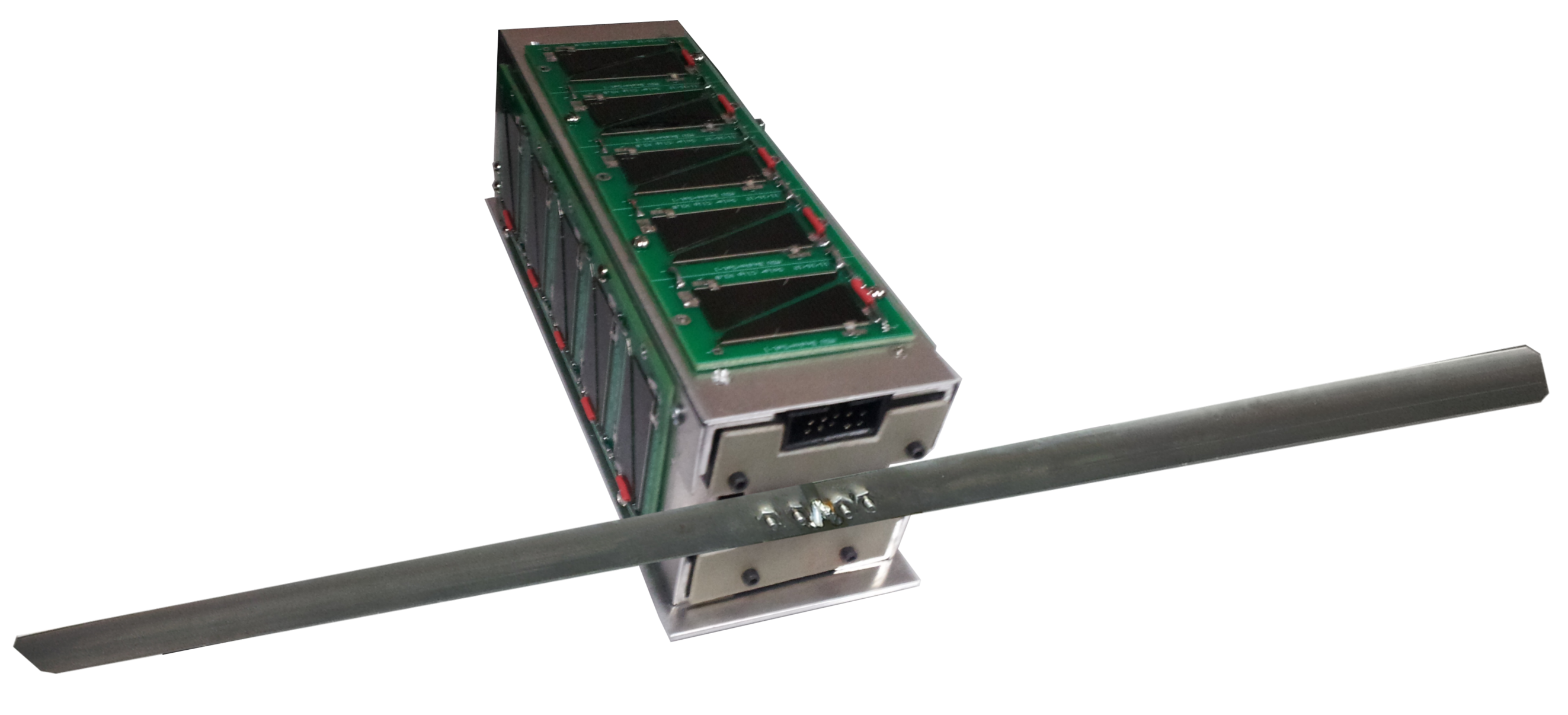
The T-Logo Qube team as data arrives from the satellite. Photo Credits: Press Democrat. Sean Scully
T-LogoQube
T-LogoQube is a 5 cm x 5 cm x 15 cm ~500 gram PocketQube satellite. It was carried by a Russian DNEPR-1 rocket as it thundered into orbit on November 21, 2013 from Dombarovsky Cosmodrome at Yasny, Russia.
The software in the satellite collects data from its orbit. Ground stations at Morehead State University and Sonoma State University received the data from the satellite.

Our Launch
The T-LogoQube represents the first step in developing and testing by students in a space environment. It was the first such launch for SSU and breaks new ground for the University's physics and astronomy department allowing it to do space-based measurements with its own satellite.

